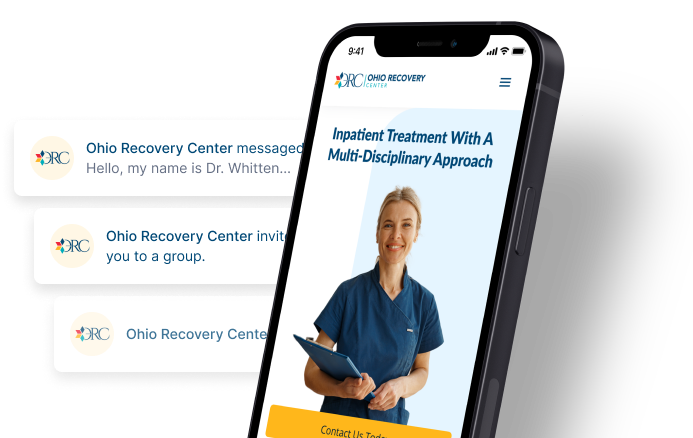Alcohol Abuse In Ohio

Medically Reviewed By: Kimberly Langdon, M.D.
Alcohol abuse can be any form of alcohol consumption that negatively affects you, your health, or the people around you.

Alcohol abuse can include drinking large amounts of alcohol in one sitting, drinking large amounts of alcohol over a long period of time, performing risky behavior after drinking alcohol, and experiencing alcohol-related health effects.
Alcohol abuse can be any form of alcohol consumption that negatively affects you, your health, or the people around you. Heavy alcohol consumption can often be linked to alcohol abuse.
Alcohol abuse is a prevalent form of substance abuse in the United States. In 2019, over 14.1 million adults and 414,000 adolescents and young adults met the criteria for an alcohol use disorder, emphasizing the need for alcohol treatment programs.
Understanding Alcohol Abuse
Alcohol abuse can begin as an infrequent, low-risk pattern of drinking, and over time escalate into frequent, high-risk alcohol consumption. Alcohol abuse can include one or many of the following drinking patterns:
- engaging in binge drinking (5 or more standard drinks in one sitting for the average adult man)
- engaging in heavy drinking (binge drinking 5 or more days per month)
- drinking alcohol while pregnant or under the age of 21
- people frequently comment on your drinking habits
- experiencing alcohol problems (legal problems, blackouts, etc.) but continuing to drink
- worsening health due to alcohol
The potential for alcohol abuse may increase if you participate in any form of excessive drinking. On the other hand, reducing your alcohol use to moderate levels can help you avoid high-risk situations that involve alcohol.
Guidelines For Moderate Alcohol Consumption
Following moderate drinking guidelines can be a lower-risk form of alcohol consumption, especially compared to heavy drinking. The CDC defines moderate drinking as consuming no more than 2 standard drinks in a day for men, or 1 standard drink in a day for women.
A standard drink contains approximately 14 grams of pure alcohol, which is equivalent to about 12 ounces of standard beer or 1.5 ounces of distilled spirits. Moderate alcohol consumption can reduce the chances of engaging in alcohol abuse.
However, moderate consumption can still carry similar health risks to heavy drinking. Before engaging in any capacity of drinking, you may wish to inform your doctor of your family history and preexisting health conditions.
Risks Of Alcohol Abuse
Alcohol affects several parts of the body in negative ways. Heavy alcohol use has been linked to:
- brain damage
- liver cirrhosis
- high blood pressure
- pancreatitis
- heart disease
- several forms of cancers
Alcohol abuse can also lead to a higher risk of alcohol poisoning, driving while under the influence, and accidental injuries.
Alcohol Use Disorder (AUD)
Aside from the long-term physical effects of alcohol misuse, alcohol abuse can also be a risk factor for alcohol use disorder (AUD), a chronic health problem defined by an inability to stop drinking.
An AUD may encompass alcohol dependence, a state where your body requires alcohol to function properly. If deprived of alcohol, a body in this state may react by entering alcohol withdrawal. Withdrawal symptoms of alcohol can include cravings, psychosis, anxiety, seizures, and delirium tremens.
Alcohol use disorders can also be a risk factor for long-term health problems, and vice versa, creating a cycle of declining health and alcohol abuse.
Treatment Options For Alcohol Abuse In Ohio
Due to the habit-forming nature of alcohol and the risk of withdrawal symptoms, it can be difficult to stop drinking on your own. Professional treatment services can offer intensive care in a safe environment, allowing you to focus on recovery away from alcohol.
Alcohol abuse and addiction treatment services may include a medical detoxification from alcohol, taking medication to manage withdrawal symptoms, attending behavioral therapy sessions, and attending support groups such as Alcoholics Anonymous.
For information on our inpatient alcohol addiction treatment services, and to find out if they work for you, your family member, or your loved one, please contact Ohio Recovery Center today.
- Centers for Disease Control and Prevention (CDC) - Excessive Alcohol Use https://www.cdc.gov/chronicdisease/resources/publications/factsheets/alcohol.htm
- Centers for Disease Control and Prevention (CDC) - Alcohol Questions and Answers | CDC https://www.cdc.gov/alcohol/faqs.htm
- Centers for Disease Control and Prevention (CDC) - Facts about moderate drinking | CDC https://www.cdc.gov/alcohol/fact-sheets/moderate-drinking.htm
- National Institute on Alcohol Abuse and Alcoholism (NIAAA) - Drinking Levels Defined https://www.niaaa.nih.gov/alcohol-health/overview-alcohol-consumption/moderate-binge-drinking
- National Institute on Alcohol Abuse and Alcoholism (NIAAA) - Understanding Alcohol Use Disorder https://www.niaaa.nih.gov/publications/brochures-and-fact-sheets/understanding-alcohol-use-disorder
- National Institute on Drug Abuse (NIDA) - Alcohol https://nida.nih.gov/research-topics/alcohol
- Substance Abuse and Mental Health Services Administration (SAMHSA) - alcohol use facts & resources https://www.samhsa.gov/sites/default/files/alcohol-use-facts-resources-fact-sheet.pdf

